Raymond Floyd, who won the US Open at Shinnecock Hills in 1986 and is a longtime member there, placed a phone call to Mike Davis, the USGA’s executive director, shortly after last year’s Open at Erin Hills. Facing Erin’s 7,800-plus yards but massively wide fairways – 60 yards in some cases – players whaled away with impunity when typical winds failed to blow. In the final round, winner Brooks Koepka hit his tee shot on the 18th hole 379 yards – with a 3-wood.
Floyd, a close observer of a Shinnecock Hills that in recent years had become considerably wider than in US Opens played in ’86, ’95 and 2004 – and planned that way for 2018 – was aghast. “I said, ‘Mike, we need to have a chat,’” recalls Floyd, at age 75 retired but still an influential voice. “I asked him, ‘Were you happy with the [fairway widths] at Erin Hills? I don’t think you were.’ Mike told me he absolutely was not. I said, ‘Well, it’s going to be on steroids at Shinnecock, because it doesn’t move and flow as much. You’ve got it dead wide, and we’ve had three really good US Opens here with it tight and narrow.’ ”
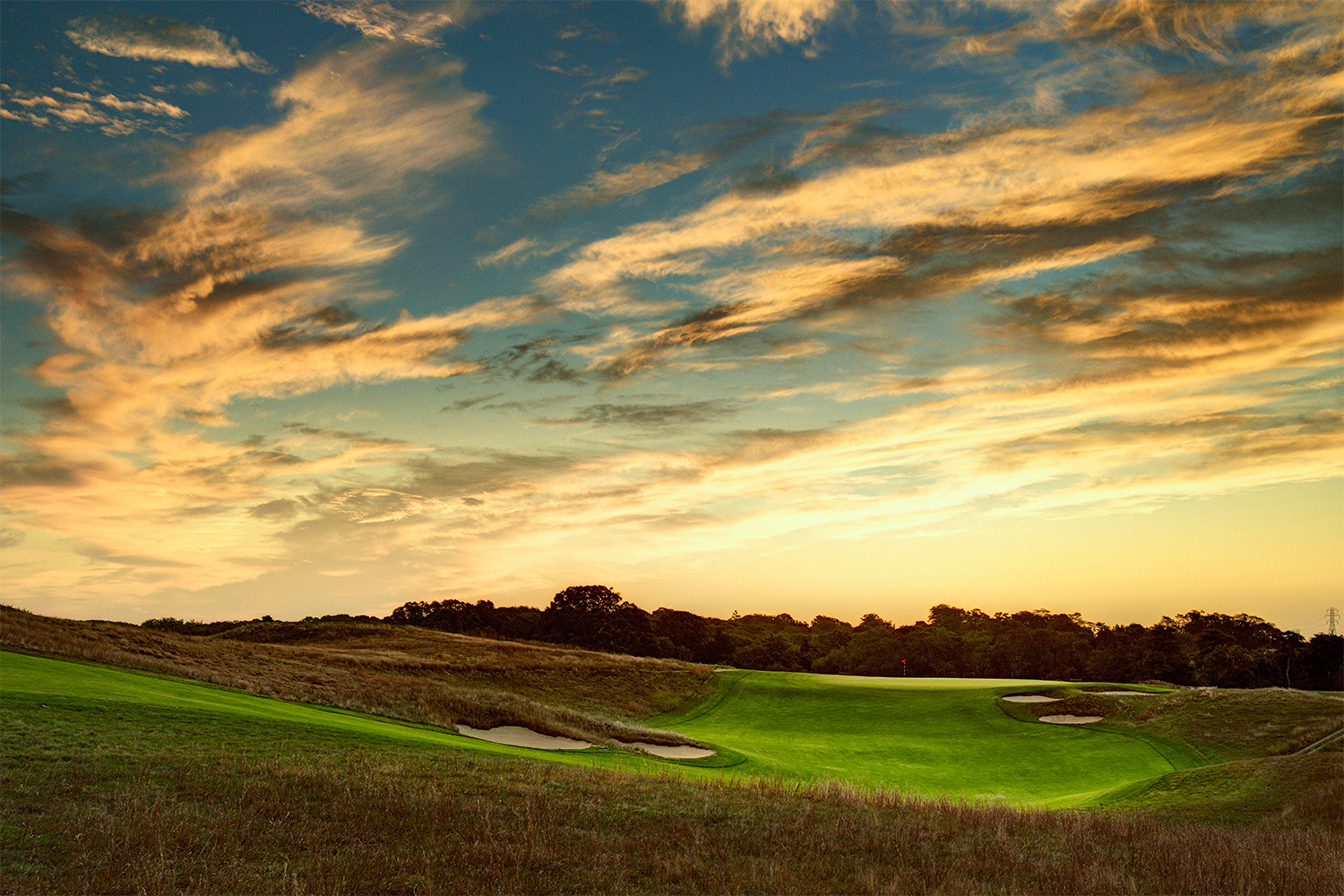
The alert from Floyd, combined with conversations Davis had with smart people in golf, must have set off internal alarms. His reaction, expressed in action more than words, was almost immediate. Within weeks, the USGA undertook dramatic alterations to Shinnecock Hills. It was highly unusual, because the changes were performed so close to the championship and not long after a three-year Bill Coore/Ben Crenshaw restoration had concluded with the USGA and Shinnecock feeling more than satisfied.
The tale of what happened, and why, is illustrative of the USGA’s willingness to act in response to the changing character of the modern game. It also points up the need for the USGA to get this US Open right. Stung by a long roll call of controversies and missteps in US Opens, its leadership on the equipment front constantly under fire, and with critical eyes riveted on a modernised Rules of Golf rolling out in 2019, it’s imperative that USGA officials deliver a championship we’ll remember for the right reasons. To put it bluntly, it’s important they not mess this up.
The return to Shinnecock Hills intensifies the urgency. This US Open is no bold, happy experiment, as was the case when the US Open went to Bethpage, a public course, in 2002. It’s not an effort to prove that a historic but short course could hold a US Open, a key subtext when it was played at Merion in 2013. Nor is it a populist effort to take a US Open to newish courses and locales, as was the case with Chambers Bay in 2015 and Erin Hills last year. Shinnecock Hills is the real deal, hallowed ground not only to the USGA but students of the game and entities the USGA needs to have in its corner. Not unimportant are the commercial interests, including Fox Sports, now in its fourth year of televising the US Open. The events of a mini-disaster at Shinnecock during its last hosting in 2004 notwithstanding, this is the last place where a serious misstep should elicit from the USGA the light-sounding phrase, “We deserve a bogey on that one.”
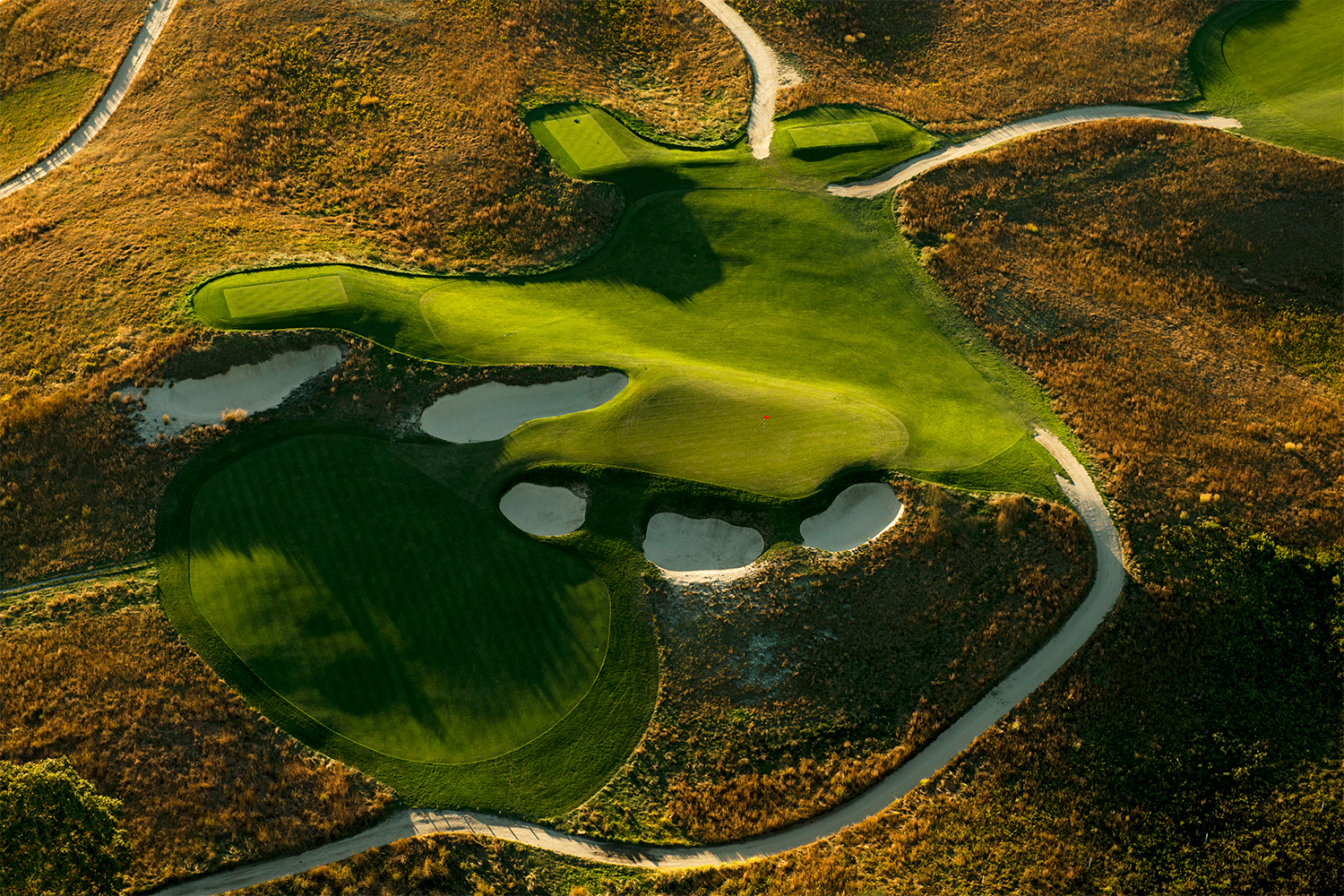
A Gloried Past, But A Stumble In 2004
Unsurpassed as a US Open test, Shinnecock is one of five founding-member clubs of the USGA. It opened in 1891, and in 1896 the second US Open ever was played there. Its early design iterations were completely redone by William Flynn in 1931. After many carefree decades as a hidden but respected gem – the club is seasonal, teeming with wealth and not particularly ambitious about being in the spotlight – Shinnecock burst to prominence in the 1986 US Open, when Floyd triumphed before a thrilled local and national audience. The championship returned in 1995 with Corey Pavin the winner, then again in 2004 when Retief Goosen prevailed over Phil Mickelson. The 2004 tournament was tainted because of dreadful, rock-hard conditions in the final round, a USGA-perpetrated error that Pavin calls “a mini-disaster, maybe a major one”. But Shinnecock emerged intact. The 2017-’18 edition of Golf Digest’s 100 Greatest Courses in America ranking has it behind only Pine Valley, Augusta National and Cypress Point.
Shinnecock is unique. Playing to a par of 70, the course at its best is stark, mostly exposed and a bit wild, in mid-summer a gold and pale-green throwback to seaside golf at its most original. Its fairways, no two of which run parallel, are a mix of flattish, bending runs and subtle roller coasters. Its many bunkers, some there for beauty but most strategically positioned, are a little evil. The course is sand-based and bouncy, naturally fast and firm, and almost always wind-swept. Its four par 3s are staggeringly diverse. As a US Open test it is insanely hard but fair. Looking down from the incredible Stanford White clubhouse, which summons images from a P.G. Wodehouse golf story, you see a course that is rough around the edges but pure within. Everything about it conveys a sort of frugal opulence, much like the old-world legacy individuals you might encounter on New York’s eastern Long Island. The design, timeless and fiendishly creative, defies attempts by the player to overwhelm it. Get out of line, and Shinnecock, like an 1890s parochial-school headmaster, will take a ruler to your knuckles.
Pavin, his language as inventive as his shot-making, calls the look, “Shinnecockian… It’s distinctive in the way it looks and plays. In 1995, there was just enough moisture to hold a slightly green colour. I’d played a lot of courses by that point and had seen courses that were somewhat Shinnecockian, but there was nothing like Shinnecock.”
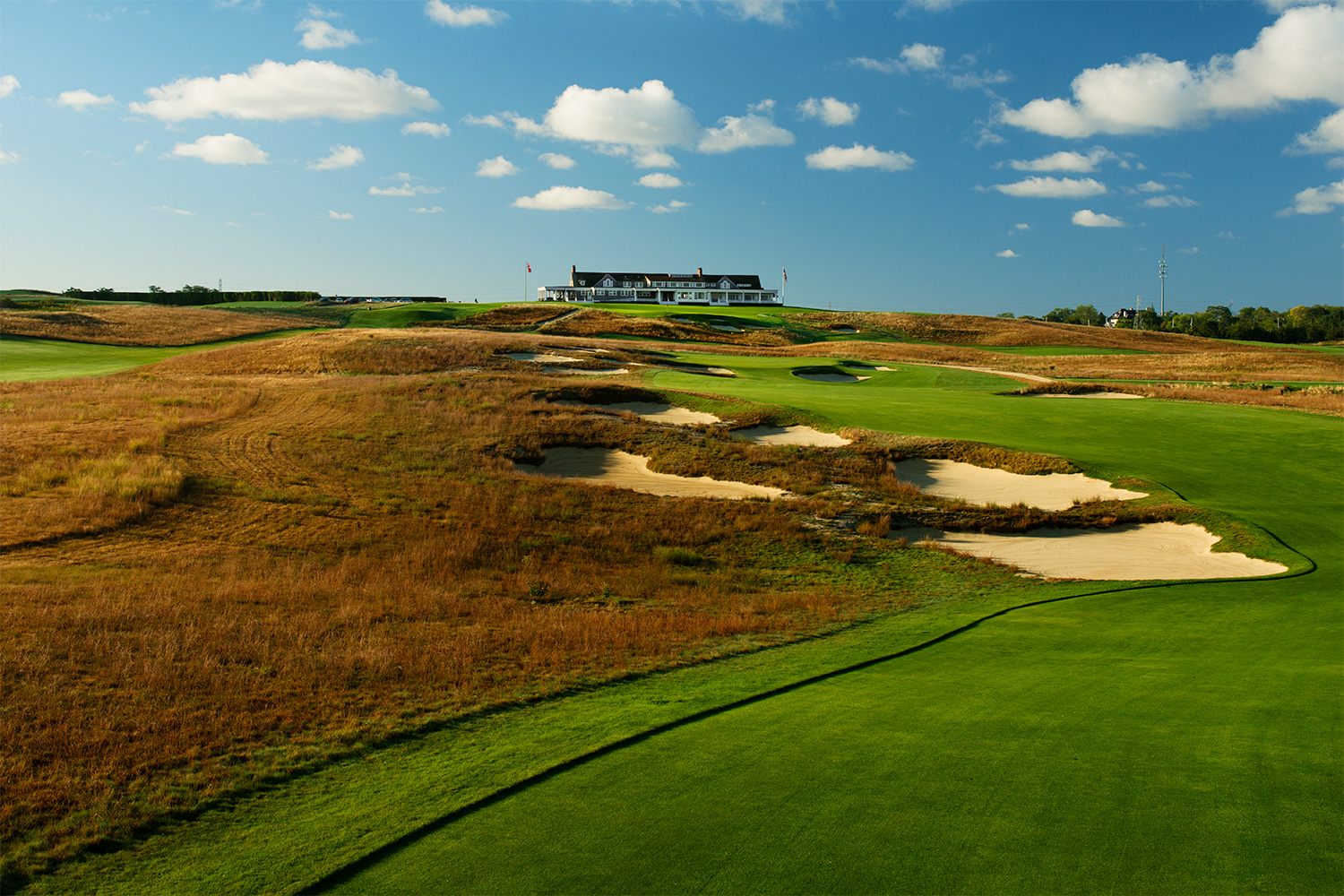
Changes Add 449 Yards
Like all courses its age, Shinnecock has required upkeep and some updating. The most dramatic work occurred beginning in 2012, when Coore and Crenshaw were called in to perform a restoration the club felt was necessary to keep the course faithful to Flynn’s design. With the USGA and board members at Shinnecock monitoring closely, Coore restored lines and angles to the fairways from 10 new tees, chosen by Mike Davis. Bunkers and other Flynn features that had become obsolete in the face of driving-distance increases were back in play. The tees, on holes two, three, four, five, six, nine, 10, 14, 16 and 18, stretched the championship distance to 7,445 yards (6,808 metres), well up from 6,996 yards in 2004. Trees and underbrush were removed, making the open terrain even airier. Every green was expanded, the original contours left intact, but the shapes more closely duplicating Flynn’s greens as seen in aerial photos from 1938.
“I wouldn’t call it a restoration,” Coore says. “We made very minor alterations, not nearly on the order as what we did at Pinehurst, Maidstone and Old Town. We mainly polished, tried to ensure that alignments worked well from the tees. We did do significant work on the right side of the [par-4] sixth hole. It’s at a low point, and the vegetation there had become prohibitively thick. We restored it to a more sandy character. But to be honest, I don’t think we’re even a footnote to the story there.”
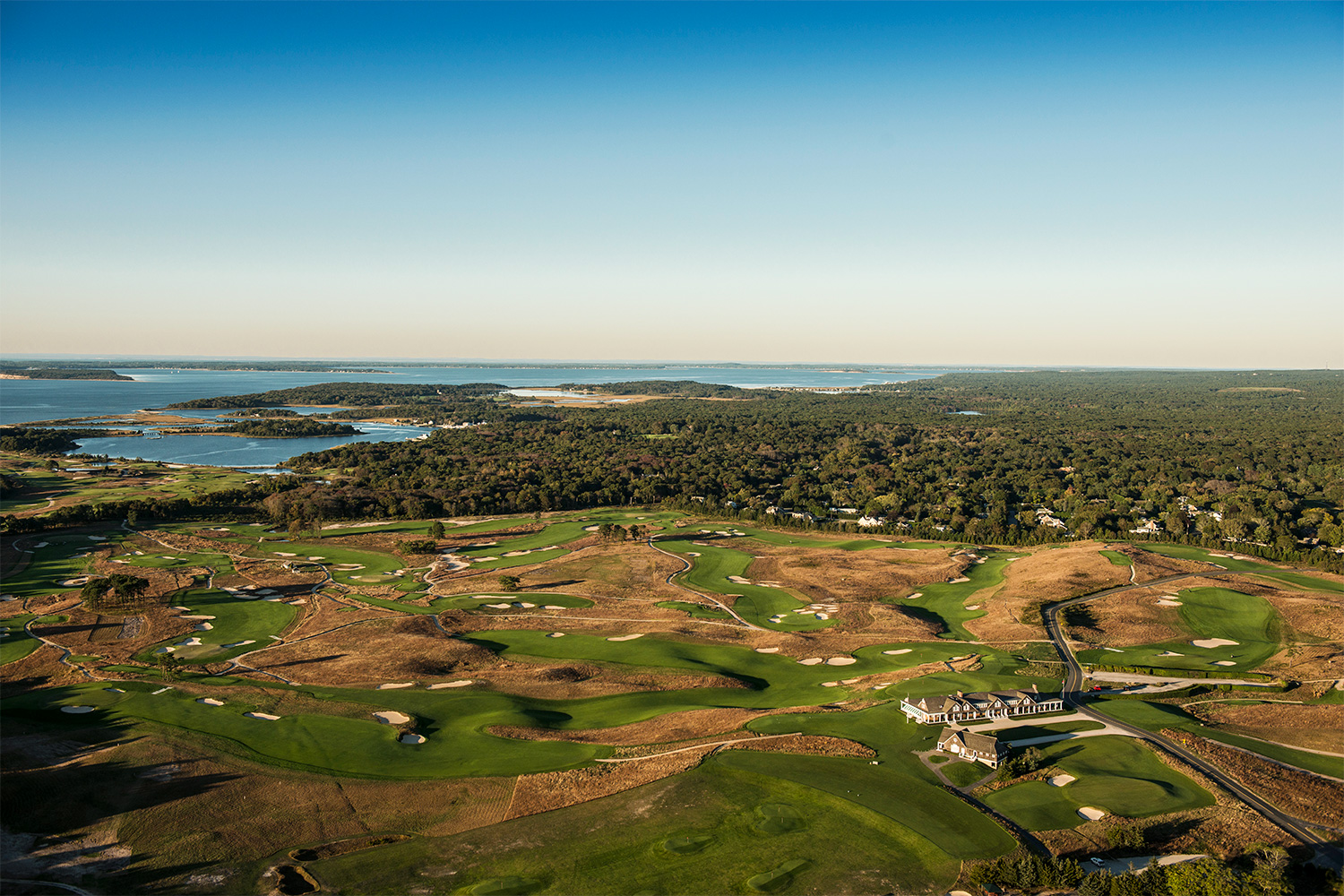
Coore’s low-key summation is understandable, in view of what came next. After Davis spoke with Floyd and other golf-savvy individuals he chooses not to name, a substantial narrowing of the fairways occurred, in golf terms, almost overnight. Under the supervision of Shinnecock’s superintendent, Jon Jennings, a crew of 75 workers, toiling 15 hours per day from September 17-25, removed an estimated 200,000 square feet of turf – almost five acres – from the sides of fairways and replaced it with strips of fescue sod sheared from Shinnecock’s nine-hole par-3 course and unused areas on the main course. It also was seeded with a fescue strain as close to Shinnecock’s as they could find. The target areas for narrowing primarily were the anticipated landing areas for pros, 275 to 325 yards from the tees on the longer holes. For the US Open from June 14-17, the fairways transition to a band of fine fescue, followed by the wild stuff – the knee-high fescue and blue-stem grass.
It was quite an adjustment, and Davis acknowledges that what he’d seen in Wisconsin last June played no small role in the decision. “Did Erin Hills influence us? Absolutely,” he says. “We went into Erin Hills anticipating wind, and with the firmness there, felt we had to present more width so players could keep balls in the fairway. Looking back, there wasn’t enough of a premium on accuracy.”
Davis points out that the narrowing is not especially draconian. “The average fairway width [at Shinnecock] in 2004 was 26.6 yards, the narrowest 25 yards, the widest 30 yards,” he says. “The average now is 41.6 yards. That’s 15 yards wider, a full 50 percent. On the other hand, it’s substantially narrower than what Bill Coore and the club had. We felt if we didn’t narrow it some, the one element the course wouldn’t have was accuracy. I’d just point out that it will be the widest of the Shinnecock US Opens.”
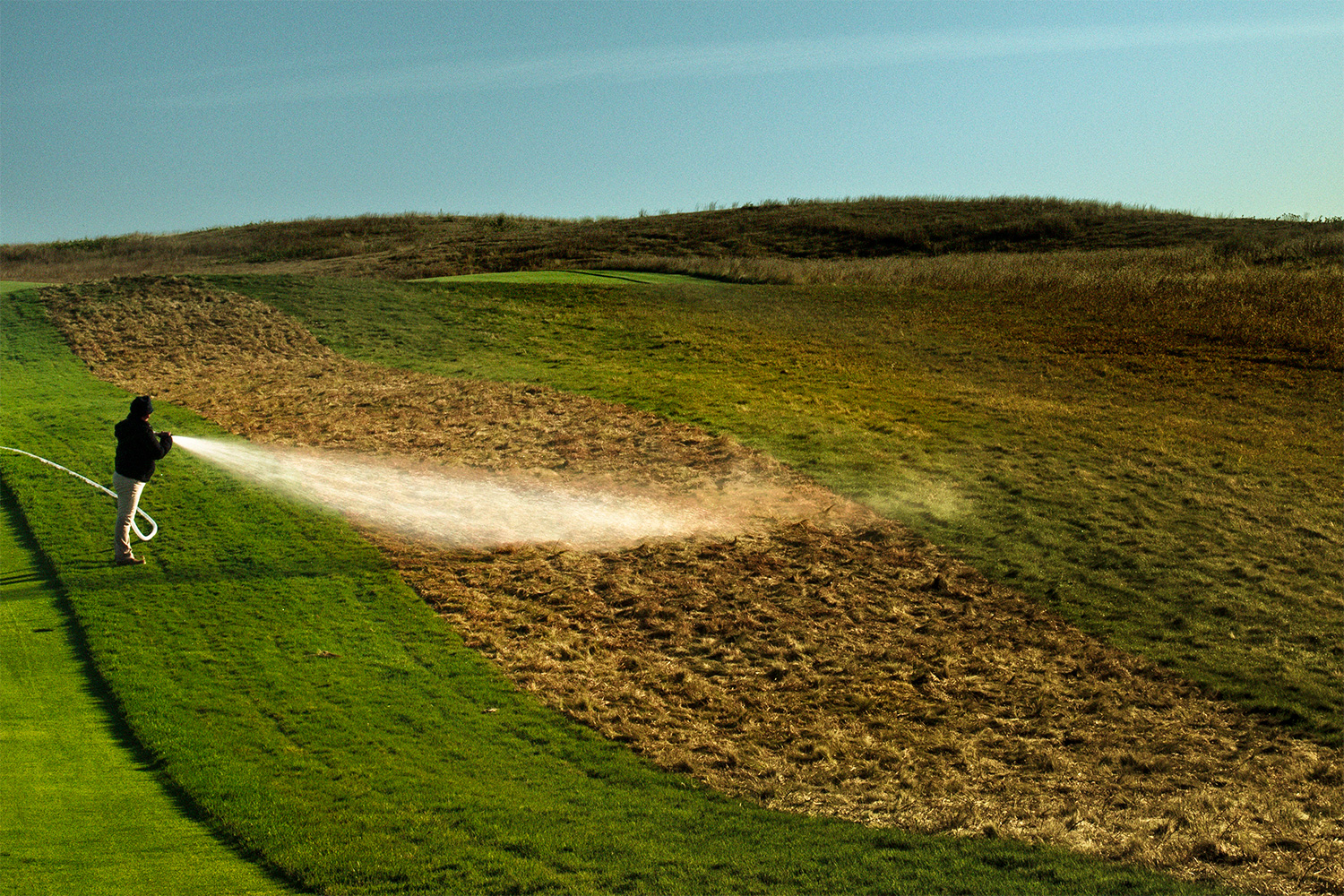
Coore says Davis’ narrowing wasn’t a rebuke of his previous work. “I don’t view it in a negative light at all,” he says. “I don’t think there’s any question that the past couple of US Opens showed Mike some things that made them feel further alterations were necessary. The game is a learning curve that never stops.”
The par-4 18th hole, where Pavin clinched his title in 1995 with a 4-wood shot to the final green, might be the best example of how Shinnecock’s width has evolved. In a walking tour of the course last autumn, Jeff Hall, the USGA’s managing director of rules and championships, said that the fairway in 2004 was 30 yards wide. After the Coore/Crenshaw restoration, it ballooned to 52. Today, it’s 42. Says Davis: “A learned person could make the argument that there’s still too much width at Shinnecock. Time will tell on that, but given what we know about the weather and our experiences there over the years, it should be an incredible test of golf.”
The narrowing is only one of several steps the USGA and the club have taken that seem to have made Shinnecock immune from setup errors. The additional 449 yards, combined with its narrowness, are potent weapons that will prevent longer hitters from hammering the course into submission – Floyd’s fear.
“I played Shinnecock with a member two years ago, and the new tees are so far back, I didn’t know immediately which holes they were intended for,” says David Eger, who was the USGA’s senior director of rules and competitions for the 1995 US Open. “Trust me, the course is plenty long.” The rough, according to Davis, will be four inches long, “I have no concern about that,” he says.
Then there are the green complexes, the source of the nightmare in 2004. Despite the course already being on the edge that year, the greens were rolled on Saturday night, deprived of water and, with a dry wind erupting Sunday from the north-west – the prevailing winds are off the Atlantic Ocean from the south-east – several greens went over the edge. “I remember hitting a short pitch to the first hole that year,” Pavin says. “I struck it cleanly, yet the ball took one huge bounce, then went off the back of the green. It was shocking.”
The 189-yard seventh green was the most notorious. Less than one tee shot in five held the green. The first two players to come through, J.J. Henry and Kevin Stadler, both made triple-bogeys. Billy Mayfair, in the second pairing, putted into a bunker. The USGA hand-watered greens between groups, the first time it had ever done so to allow play to continue. This was viewed as unfair to the early groups that had suffered the worst of it. Syringing during play has been done for the health of the greens (former USGA executive director David Fay points to Southern Hills in 2001). But to simply allow the competition to continue, no.
“That was at the height of the USGA’s infatuation with firm and fast,” says Fay, who in 2004 had the job Davis holds now. “We learned that there were limits to firm and fast. We learned the hard way, and it wasn’t pretty. There was a lot of finger-pointing, our version of the Grassy Knoll.”
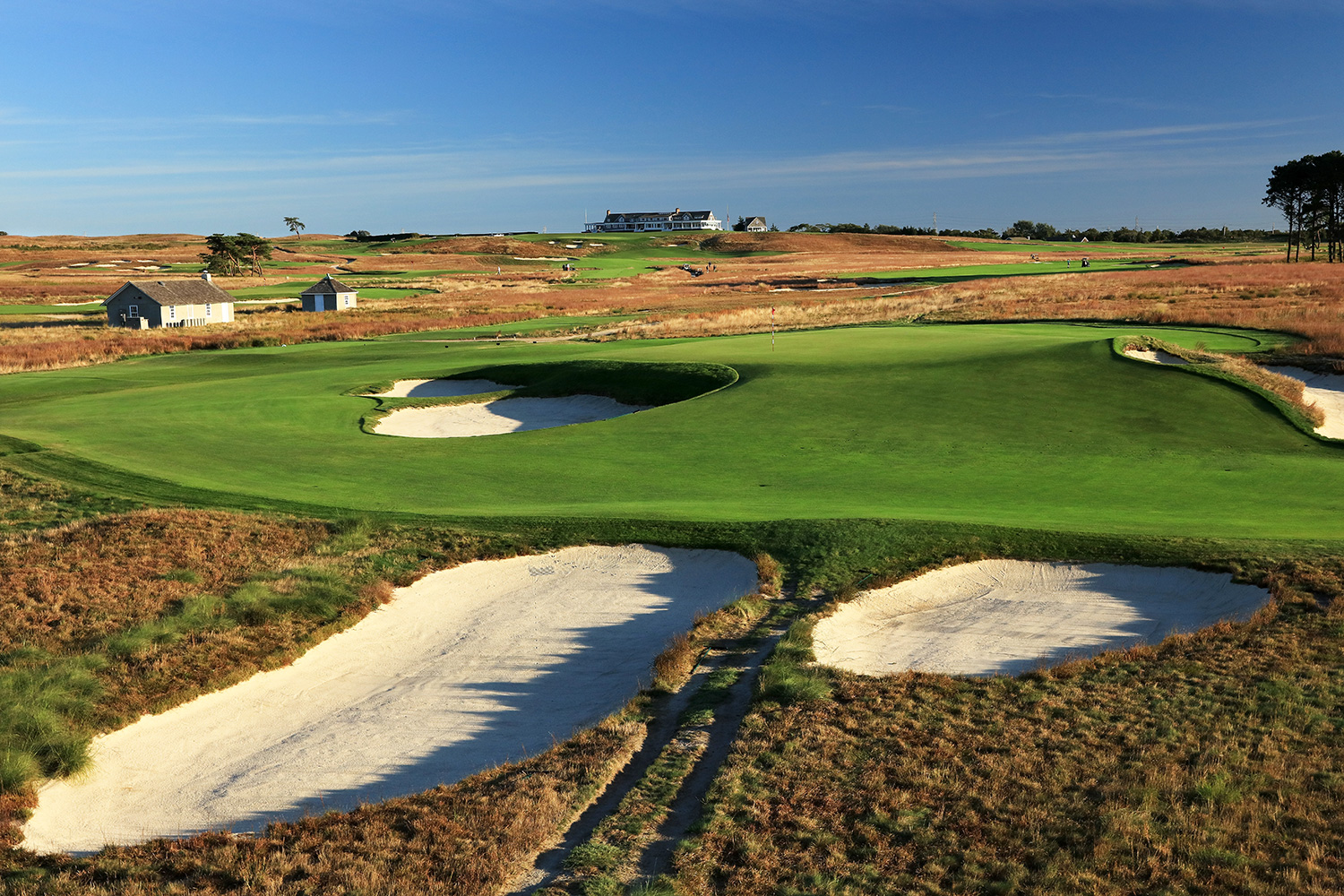
Not that there wasn’t room for some dark humour. On the seventh tee, Fred Funk and his caddie, Mark Long, watched Mickelson deliberately hit into a greenside bunker, which, incredibly, seemed to provide the best chance at making par. “I said to Fred, ‘That’s definitely the play,’” Long recalls. Funk nodded, but as he got ready to play, he walked back to the bag. “Fred whispered,‘I just can’t make myself aim at sand on apar 3,’” Long says. Funk wound up playing the hole conventionally and made a double-bogey. Mickelson, after playing the simplest of bunker shots, made par.
It wasn’t only the greens. Shots that came up short on the par-4 10th hole rolled absurdly back down the fairway, a bad caricature of the ninth at Augusta. A caddie for one of the contenders that year recalls the player trying to tee a ball on the practice range, only to have the tee snap in half. “He said, ‘You know you’re in trouble when they lose control of the range,’” the caddie laughs.
It’s all but impossible for a course-setup disaster like that one to occur today. The seventh green, like all at Shinnecock, is larger now, allowing for challenging hole locations but few apocalypse-inducing ones, such as occurred there in 2004, as well as at the 18th greens at Olympic in 1998 and the poor choice at No.18 at Southern Hills in 2001 (also won by Goosen). “Trouble historically almost always can be traced to hole locations,” Fay says. “Given a choice, it’s probably best to go with the location that is more benign. Nobody will ever go down in infamy for setting a ho-hum spot… It’s a strange threshold, but you want to avoid cutting a hole that can wind up on a video. Social media is not always kind that way.”
It’s not lost on Eger that some people actually cheer for a setup feature to go over the edge. “Three factions expect mistakes,” he says. “The players, who aren’t familiar with the rules officials, volunteers and staff, have a sensitive eye for things not done just right. They’ll always be mad about something; it’s just a matter of the noise level. There’s the media, which actually [cheers] for something to go wrong so they have something to write about. Then there’s the public. They in general like to see players struggle, to be kicked around like they are at their home course.”
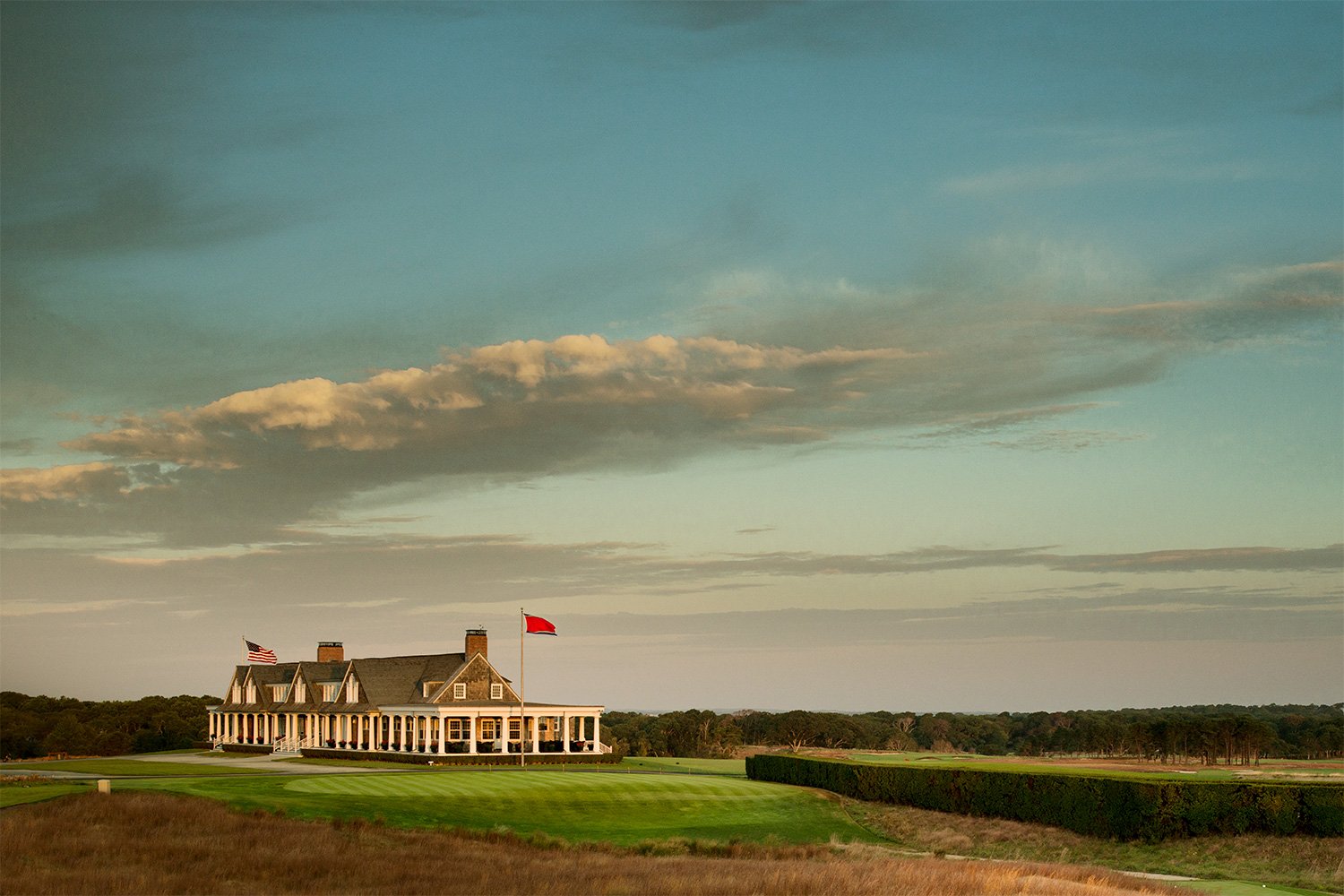
But other safeguards are already in place. Although most of Shinnecock’s greens will have roll-off areas suggestive of Pinehurst, the seventh green and three others (three, eight and 12) will feature collars of moderate length to prevent balls from rolling into bunkers and other crazy instances where punishments outweigh the crime.
Perhaps most important, agronomy and maintenance practices have advanced exponentially since 2004. The advent of the TruFirm device that measures firmness, another instrument that measures soil moisture and yet another that monitors evaporation, are remarkable tools. These, in combination with improved weather forecasting, will allow superintendent Jennings, already regarded as a wizard, and Darin Bevard, the USGA’s director of championship agronomy, to control conditions with precision.
But Shinnecock is not Augusta National, which has far more intimate knowledge and control of its course than the USGA does as a visitor. Davis at one point in our conversation noted, “We don’t own the golf course, and certainly we’re not architects.” But science, in concert with experience and a solid working relationship with Shinnecock in place since the 2018 US Open was announced in 2011, should ensure a safe passage.
Could anything else go wrong? Of course. Rules administration must be swift and accurate, in the event of a quirky episode such as Dustin Johnson’s ball moving on the green as he stood near it preparing to putt at Oakmont in 2016. Johnson was deemed to have caused the ball to move and received a one-stroke penalty that, under rules now in effect, wouldn’t result in a penalty at all. It wasn’t just the apparent subjectivity of the rule that was at issue, but the USGA officials’ uncertainty and delay in enforcing it. Would they administer more efficiently now? The USGA and Shinnecock also need to be wary of areas that could loom as hot spots, such as an ancient, waste-like bunker short and to the left of the green at the par-5 fifth hole.
A photo of it indicates it being neither fish nor fowl, bunker-wise. Dustin Johnson again comes to mind, with that awful instance on the final hole at Whistling Straits in the 2010 US PGA Championship. How to handle weather warnings if a nasty summer thunderstorm rumbles in? Still there as a reminder is the 1991 US Open at Hazeltine National, where a spectator was killed by a lightning strike.
All of these issues don’t seem to have gotten the better of Davis, who has been with the USGA in different hands-on capacities since 1990. He seems exhilarated by the return to Shinnecock. “I feel no tenseness about everything coming off perfectly,” he says. “I’m completely honest on that. These great golf courses are like children. I love them all, but I confess to being especially fond of this one. I love Shinnecock’s history and architecture, and I’m praying that whatever is left over from 2004 can be put to rest.”
When presented with the idea that a lapse of some kind at Shinnecock could cost the USGA on the other areas it oversees – rules and equipment being the most high-profile – Davis said, “If we perform really well here, it can have a positive effect on how well we do in other areas. Conversely, if we err in an area of governance, it detracts from what we do at our championships. Our mission – our North Star – is to make the game better.”
In a perfect world, we see an unforgettable conclusion to the US Open at grand old Shinnecock Hills, capped perhaps by Davis putting in a call to Raymond Floyd on Sunday evening with the greeting, “So how’d we do?” Knowing in advance that the reply will be a hearty, “Well done.”

